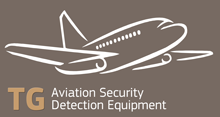Aviation Security Detection Equipment

Aviation Security Detection Equipment
AVSEC
Challenge
The European Commission is defining legally binding technical specifications and performance requirement standards for various types of detection equipment used at EU airports. The introduction of eligible instruments and performance standards in EU legislation calls for European common testing methodologies (CTMs) for detection equipment, to facilitate mutual recognition of approved or certified equipment. The challenges associated with the EU Regulation are that there are no standard approval procedures in the EU for aviation detection equipment, with diverse security equipment standards at Member State level.
Consequently, a common EU certification, testing and trialling scheme for aviation security equipment is required. The European Commission is studying the feasibility of a regulation laying down rules on the organisation and operation of accreditation of conformity assessment bodies for aviation security. As the conformity testing is envisaged to be carried out at several accredited test centres in EU Member States, a test centre quality system will be required.
Focus of work
Focus of the Thematic Group was on the aviation sub-sector, with activities covering:
- Technical specifications and detection requirements
- Common testing methodologies (CTM)
- Development of an EU certification system
- Technical exchanges with third countries and international organisations.
The work programme - Main deliverables
The deliverables of this TG are in the form of a series of reports produced during 2013:
- Technical Considerations on Explosives Trace Detection in EU Legislation (JRC85509)
Explosives trace detectors (ETD) are security detection equipment which indicates presence of explosives by detecting trace amounts of explosives, either in the form of particulate material or as a vapour. Due to its high sensitivity, ETD is today regarded as an essential tool for airport security screening. The EU Regulator has also included ETD as eligible equipment, sometimes as a supplementary technique, for practical all regulated screening situations at EU airports. However, detailed measures for its actual use are rather sparse and not consistent across the various chapters of the Regulation. There are measures detailed for its use in some situations but not for other. Guidelines on sampling are not consistent and sometimes missing. Furthermore, detection performance standards remain to be defined. The aim of this study is to give an overview of the implementation of ETD in Regulation as of today and to provide an expert assessment of how it may be improved, particularly regarding guidance on sampling.
For further details, please contact the ERNCIP Office. - Detection Requirements and Testing Methodologies for Aviation Security Screening Devices in the EU and EFTA (JRC81650)
The European Commission is laying down legally binding technical specifications and performance requirements for aviation security screening equipment used at the EU airports. Introducing such performance standards in legislation requires a harmonised single European conformity assessment mechanism. As preparation for such a certification scheme, a study was carried out to get a better view of the performance requirements and testing methodologies for screening equipment at civil airports employed in the EU and EFTA Member States today, including the process of acquiring equipment. The study was organised by the European Reference Network for Critical Infrastructure Protection (ERNCIP) thematic area on Detection Equipment for Civil Aviation Security (ERNCIP-AVSEC) and is based on a questionnaire that was distributed via the Regulatory Committee on Aviation Security to EU and EFTA states' authorities in November 2012. The results from the study show that 18 of the 27 countries that responded to the questionnaire have an approval procedure in place for aviation security equipment regarding threat detection performance. Only four countries, however, issue product certificates. Procurement of equipment for passenger and hold baggage screening is typically handled by airports while for in-flight supplies and cargo it is sometimes handled by regulated agents. On-site acceptance tests are required in 11 of the countries while 19 countries conduct daily tests. Mainly two entities are responsible for adjusting sensitivity settings: the airport operators and the appropriate authorities.
For further details, please contact the ERNCIP Office.
Deliverables List
Upcoming events
Latest News
Aviation Security TG meeting: Sub-group on Common Testing Methodologies (CTM)
Aviation Security TG: sub-group on Explosives Trace Detection
Aviation Security TG: sub-group on Common Testing Methodologies (CTM)
